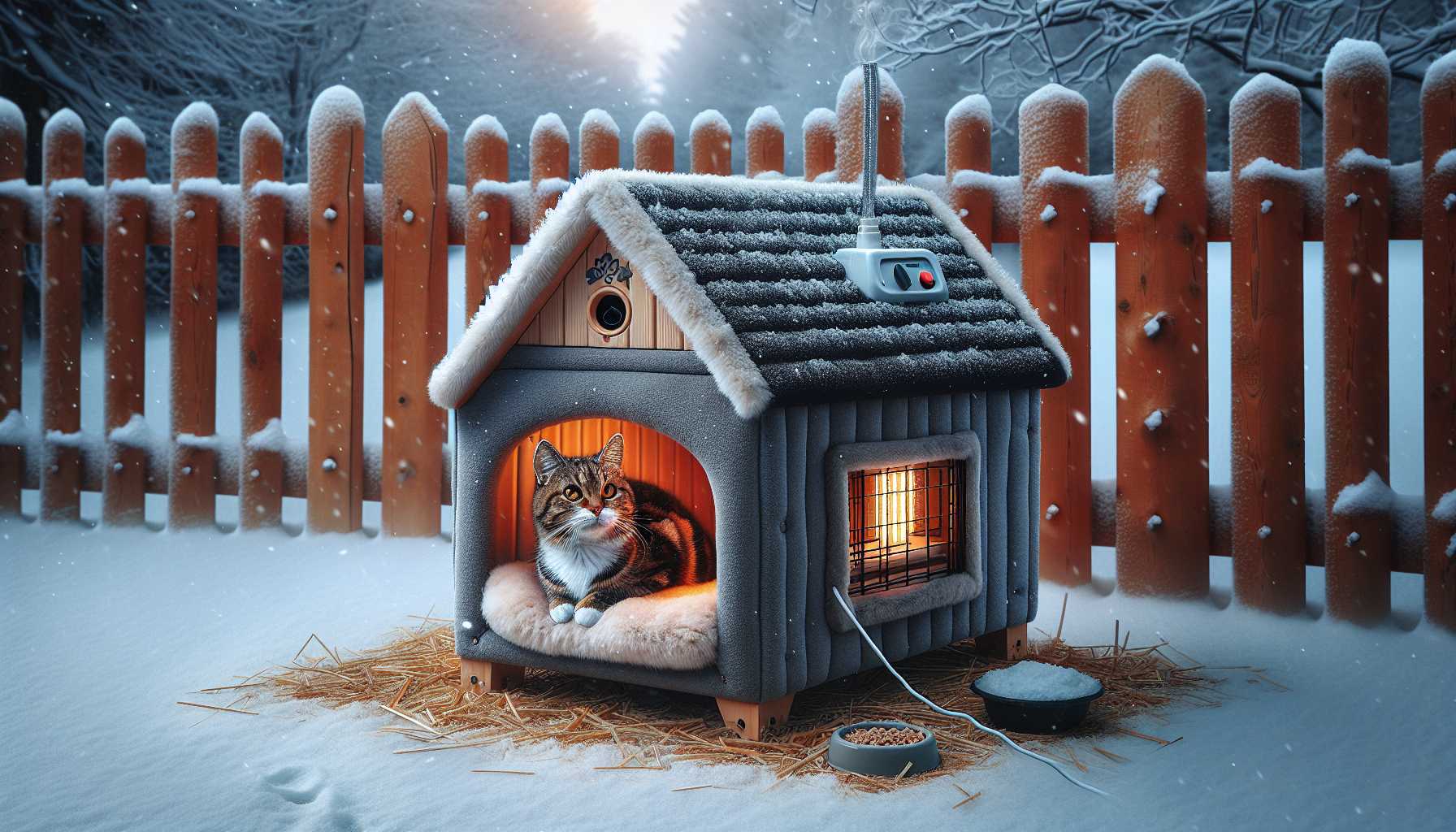As winter draws near, the concern for outdoor cats battling the frigid temperatures often grows. It could be neighborhood stray cats or even your pet cats that enjoy their time outside. In any case, to ensure their survival, supplying them with toasty shelters becomes ever so crucial.
Significance of Heated Cat Houses
Let’s come to terms with the reality – winter can be quite unforgiving for our feline buddies. Heated cat houses serve as safe sanctuaries from the icy cold, wind, and snow. These shelters can quite literally become lifesavers for cats enduring the outdoor chill!
How to Select the Ideal Heated Cat House
I began recognizing important features of heated shelters for cats when I started searching for one. Here are some essential elements to consider:
– Waterproof materials
– Elevated base to protect from ground frost
– Safe heating mechanisms
– Convenient entry and exit points
– Effective insulation
Crucial Features to Keep an Eye Out For
The safety of your cat must be a priority! These are some features to look for in a top-quality heated cat house:
– Control via a thermostat
– Cord covers that are resistant to chewing
– Weather-resistant structure
– Padding that is machine washable
– Multiple safety exits
Tips for Setting Up a Heated Cat Shelter
Placement is a critical factor! Through my own experiences, I have discovered some handy tips:
– Position the shelter under a cover or against a wall
– Elevate it slightly from the ground
– Locate the entrance to face away from the wind
– Keep the power cord protected
– Add a few blankets or some straw for supplemental warmth
Maintenance Advice
Maintaining the top-notch state of your heated outdoor cat house is simple if you follow these instructions:
– Regularly inspect cords
– Clean the house monthly
– Change the bedding when necessary
– Keep an eye out for weather-inflicted damage
– Routinely check the heating element performance
Conserving Energy and Ensuring Safety
Certainly, no one wants to rack up enormous electricity bills! Fortunately, contemporary heated cat houses are strikingly efficient:
– Most modern houses use between 20-40 watts
– Many have automatic shut-off functions
– Heating controlled by temperature
– Safe to use during wet conditions
– Low overall energy usage
Benefits Beyond Providing Warmth
These snug shelters do more than just provide warmth:
– Shelter from predators
– Dry space during rain or snow
– Safe spot for resting
– Reduction in stress
– Comfort amidst harsh weather conditions
Making the Heated Shelter Alluring for Cats
Here are a few tips to make heated cat houses more attractive to the little ones:
– Place familiar bedding inside
– Keep food close
– Maintain cleanliness
– Provide easy access
– Include multiple hiding spots
Remember, offering warmth to outdoor cats is not just caring – it’s essential.

